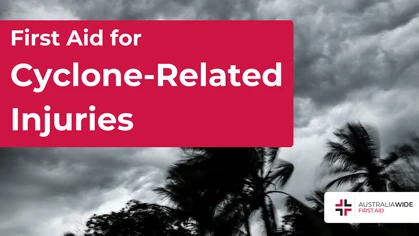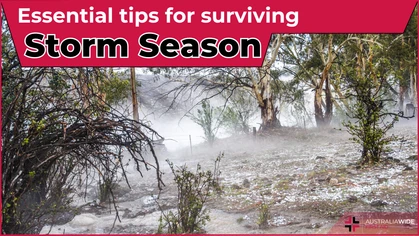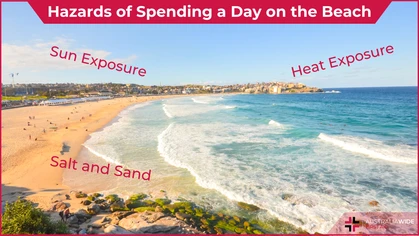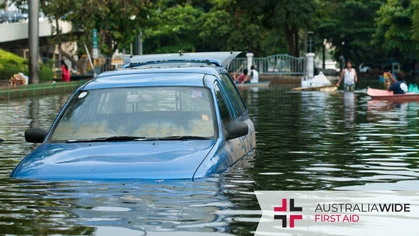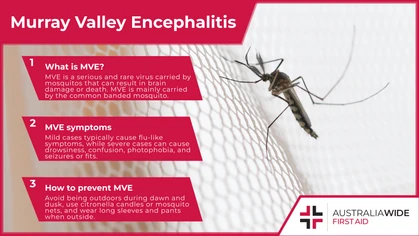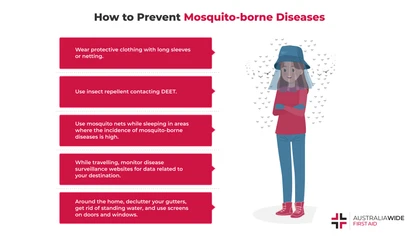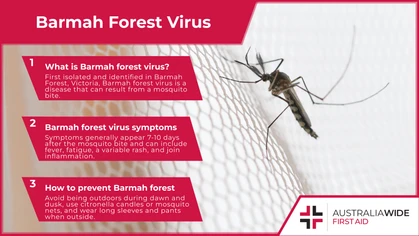First Aid for Smoke Inhalation

Seasonal Concerns
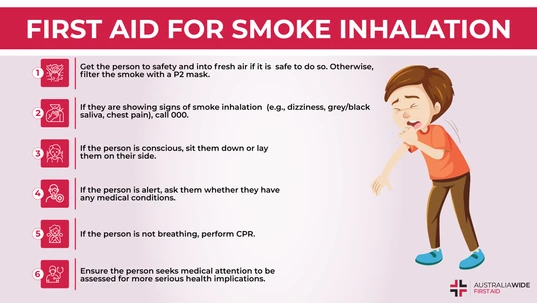
Smoke inhalation occurs when you breathe in the products of combustion during a bushfire, which can include particulate matter and deadly gases like carbon monoxide. Today, we look at how to treat smoke inhalation before medical help arrives.
Smoke inhalation can cause several health problems, including lung damage, bronchitis and even cancer. In some cases, it can be fatal. If you are unfortunate enough to experience smoke inhalation, it is important to know how to provide first aid treatment. This article will provide information on the causes of smoke inhalation and the steps you need to take to provide first aid treatment.Bushfires in Australia
Bushfires are common in Australia, with around 400 bushfires occurring each year. Most of these fires are small and easily controlled. But occasionally, we experience devastating bushfires that can cause loss of life and extensive damage to property. In the worst-case scenario, a bushfire can burn for weeks and destroy everything in its path.Bushfire Statistics
In the last 10 years, there have been an average of 11 fatalities per year from bushfires. Most people who die in bushfires are caught by the fire while trying to escape. Around 60% of all fatalities occur while people are trying to leave their homes. The total cost of damages caused by Australian bushfires is estimated at $4 billion per year. This includes both direct damage (such as loss of property and infrastructure) and indirect damage (such as business closures and job losses).Smoke Inhalation
Smoke inhalation is one of the biggest dangers during a bushfire. The smoke produced by a bushfire can contain several harmful chemicals, including carbon monoxide, hydrogen cyanide and particulate matter. It is important to know about smoke inhalation because it can cause various health problems, including lung damage, bronchitis and even cancer. In some cases, it can be fatal. If you are unfortunate enough to experience smoke inhalation, it is important to know how to provide first aid treatment. This article will provide information on the causes of smoke inhalation and the steps you need to take to provide first aid treatment.Elements of Bushfire Smoke
There are three main elements to bushfire smoke: gases, particles and water vapour. Bushfire smoke is a mixture of gases and particles. The main gases found in bushfire smoke are carbon monoxide (CO) and nitrogen dioxide (NO2). CO is produced when the fire burns materials containing carbon, such as wood, petrol and coal. NO2 is produced when the fire burns materials containing nitrogen, such as leaves and grass. Hydrogen cyanide (HCN) is another gas found in bushfire smoke. It is produced when the fire burns materials containing nitrogen, such as plastics and synthetic fabrics. HCN is a highly poisonous gas which can cause death within minutes. The third main element of bushfire smoke is particulate matter (PM). PM is made up of tiny particles of soot, ash and other materials. These particles can be inhaled deep into the lungs and cause several health problems, including lung damage, bronchitis and even cancer.Signs and Symptoms of Smoke Inhalation
The signs and symptoms of smoke inhalation can vary depending on the severity of the exposure. Mild exposure to smoke may cause coughing, wheezing and difficulty breathing. More severe exposure can cause nausea, vomiting, dizziness, confusion and loss of consciousness. Other common symptoms include:- Visible signs of ash and smoke around the mouth and nose.
- Grey or black saliva.
- Chest pain or tightness.
- Hoarse voice.
- Blurred vision.
- Numbness or tingling in the extremities.
- Burns inside the mouth, nose or throat.
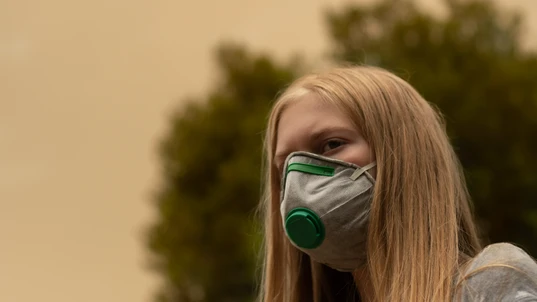
Bushfire smoke contains a variety of particulate matter and deadly gases. As such, smoke inhalation can cause severe symptoms like difficulty breathing and unconsciousness. P2/N95 masks are one good method for filtering out bushfire smoke.
First Aid for Smoke Inhalation
If you are with someone who has inhaled smoke, it is important to follow the steps below:- Get the person to safety and into fresh air if it is safe for you to do so.*
- If the person is showing the above symptoms, you should call 000.
- If the person is conscious, sit them down or lay them on their side.
- If the person is alert, ask them whether they have any medical conditions.
- If the person is not breathing, perform CPR.
- Ensure the person seeks medical attention to be assessed for more serious health implications. If left untreated, severe smoke inhalation can be fatal due to complications.
Preventing Smoke Inhalation
There are various things you can do to protect yourself from smoke inhalation:- Stay indoors as much as possible.
- If you must go outside, wear a mask or scarf over your nose and mouth to filter out the smoke.
- Keep your windows and doors closed.
- Avoid exercising outdoors.
- Drink plenty of fluids to keep your throat moist.
- Avoid using air conditioners, or only use them on 'recycle', as they can draw smoke into your home.
Smoke Inhalation in Asthmatic People
If you have asthma and inhale smoke, it is important to follow your Asthma Action Plan. You may need to use your reliever medication more often than usual and you may need to increase the dose. If your symptoms are getting worse, seek medical help immediately. If you do not have an Asthma Action Plan, it is important to see your doctor as soon as possible so that one can be developed. These gases can irritate your lungs and make it difficult to breathe. The particles in bushfire smoke can also irritate your lungs and cause coughing and wheezing. If you have asthma, it is important to stay indoors as much as possible when bushfire smoke is present. If you must go outside, wear a mask or scarf over your nose and mouth to filter out the smoke particles. It is also important to keep your Asthma Action Plan up-to-date and to always have your reliever medication with you. If you do not have an Asthma Action Plan, see your doctor so that one can be developed. If you experience difficulty breathing, coughing or wheezing, it is important to use your reliever medication and seek medical help immediately.Asthma First Aid in a Bushfire
People with asthma may have a more severe reaction to smoke inhalation than other people. If the person is conscious apply the following plan.- Sit the person comfortably upright. Be calm and reassuring. Do not leave the person alone.
- Without delay, give 4 separate puffs of a “reliever”. The medication is best given one puff at a time via a spacer device. If a spacer is not available, simply use the puffer.
- Ask the person to take 4 breaths from the spacer after each puff of medication.
- Use the person's own inhaler if possible. If not, use the first aid kit inhaler if available or borrow one from someone else.
- The first aid rescuer should provide assistance with administration of a reliever if required.
- Wait 4 minutes. If there is little or no improvement give another 4 puffs.
- If there is still no improvement, call Triple Zero (000) for an ambulance immediately. Keep giving 4 puffs every 4 minutes until the ambulance arrives.
Final Thoughts
Bushfire smoke contains harmful chemicals and particles that can cause injury to the lungs. If you are affected by bushfire smoke, it is important to seek medical attention. However, there are also some things you can do yourself to help relieve symptoms until you can get medical help. For more information on how to recognise and treat the signs and symptoms of bushfire smoke inhalation, book a First Aid course with us today.
Originally published at
https://www.australiawidefirstaid.com.au/resources/first-aid-for-smoke-inhalation
as part of the Australia Wide First Aid Articles Library
